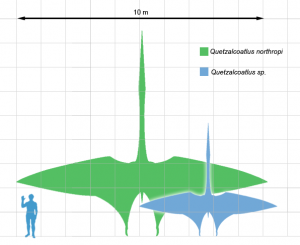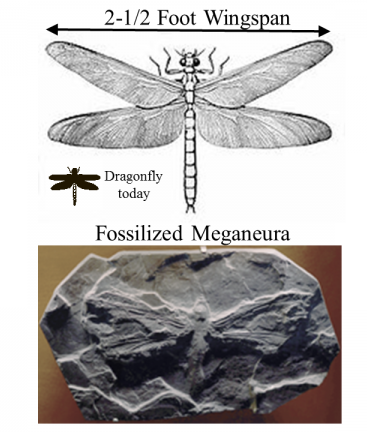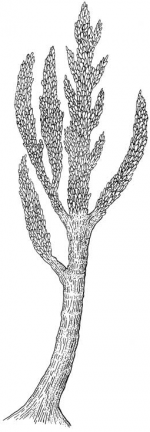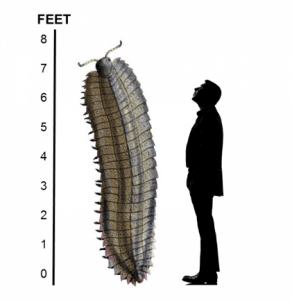[Originally published on Pre-Flood World—What Was it Like?]
Biblical Creation holds that God created a perfect initial world with no death, no carnivory, and no “survival of the fittest.”[i] Further, animals were created to reproduce—just as we observe today—after their “own kind.” Creationists also believe that this perfect world held out until it was marred by the sin of Adam and Eve, which brought death, suffering, bloodshed, and disease.[ii] Geographically, this pre-Flood world had only a single landmass (Rodinia[iii]) until the Flood broke the continents apart. The Flood occurred 1,656 after Creation according to English Bible translations.
Biblical creationists have presented many pre-Flood climate models over the years, with many of them called “Canopy Models.” While several variants exist, all canopy models interpret the “waters above” (firmament) in Genesis 1:7 as some type of water-based canopy encircling the Earth from the beginning of creation until the Flood. As models of history, these ideas held promise to explain the pre-Flood climate, but they produced problems. For example, meteorologist Dr. Larry Vardiman spent decades at the Institute for Creation Research modeling a pre-Flood vapor canopy. In the end, he found no way for the modeled steam to avoid making earth dangerously hot. While these models and others exist, we ultimately don’t know what the pre-Flood world was like because we weren’t there. Further, the Bible gives few insights. It does suggest the following features:
1 – Before the Fall, the atmosphere was perfect for sustaining life (Genesis 1:31) and there was no death (Genesis 2:17; Romans 5:12; 1 Corinthians 15:22). This soon ended.
2 – Earth’s atmosphere likely had sunlight and temperature variations within the days and nights (Genesis 3:8).
3 – Given that Adam and Eve were told to be “fruitful and multiply and fill the earth” (Genesis 1:27; 3:21) and they were “naked and unashamed” before the Fall (Genesis 2:25), it appears they had no need of clothing before the Fall.
4 – The Flood ruptured earth’s single land mass. It rearranged continents and pushed up today’s mountains (Psalm 104:8).
5 – Genesis 2:5–6 states, “For the Lord God had not caused it to rain on the earth, and there was no man to till the ground; but a mist went up from the earth and watered the whole face of the ground.” While this may mean that there was no rain until the Flood, this passage is at least clear that God originally used an underground system to water plants. After the Flood, a new, above ground system we call the water cycle began.
6 – Because the rainbow was given to mark a new covenant between God and the Earth (to never again Flood the entire earth) (Genesis 9:13), there is the possibility that Earth’s climate was changed after (and by) the Flood to allow rainbows.[iv] However, God may have used an existing phenomenon as a sign of His covenant.
These insights point to the idea that the pre-Flood world was quite different than the post-Flood world of today. The New Testament also acknowledges this distinction. Second Peter 3:6 says, “by which the world that then existed perished, being flooded with water.” The fossils also indicate differences in the pre-Flood.
♦ Giant land beasts, such as sauropod dinosaurs that grew as large as 115 feet and 200,000 pounds.
♦ Giant flying reptiles called pterosaurs had over 50-foot wingspans (e.g., Quetzalcoatlus).
♦ Giant dragonflies had 2-1/2 foot wingspans and 17-inch bodies (Meganeura).
♦ Mushrooms grew over 20-feet high (Prototaxites).[v]
♦ Giant millipedes grew over eight feet long (Arthropleura).
♦ Sea lilies (not plants, but Echinoderms) are measured in inches today, but reached over a dozen feet before the Flood.
♦ Millions or more fossils of shallow marine creatures show that the pre-Flood world had vast (continent-sized) stretches of shallow seas unlike today’s deep oceans.
The above list could be much longer; these are just a few examples. Biblical creationists and evolutionists agree that these giant creatures, plants, and habitats existed. Indeed, they are in the fossil record for everyone to evaluate, regardless of the worldview lens through which they are viewed. We also agree that these ancient features existed in a different version of the Earth. Evolutionists place it millions of years ago, while Biblical creationists place it before the Flood, just thousands of years ago. Next, we’ll look at some of these creatures more closely.
GIANT FLYING REPTILES (PTEROSAURS)
One of the largest flying reptiles is Quetzalcoatlus, which was named after the Mesoamerican feathered serpent god, Quetzalcoatl. Many studies have attempted to estimate this creature’s wingspan, with most estimates coming in over 36 feet.[vi]

Scientists who have studied and published on this extensively have even admitted: “…it is now generally agreed that even the largest pterosaurs could not have flown in today’s skies” and have offered explanations such as “warmer climate” or “higher levels of atmospheric oxygen” as reasons it could have flown only during the era in which it lived.[x]
Some secular studies that have investigated air bubbles trapped in amber that was dated to the “ancient world in which dinosaurs lived,” have found both increased pressure as well as greater oxygen levels. The magazine New Scientist wrote, “One implication is that the atmospheric pressure of the Earth would have been much greater during the Cretaceous Era [rock system], when the bubbles formed in the resin. A dense atmosphere could also explain how the ungainly pterosaur, with its stubby body and wing span of up to 11 meters, could have stayed airborne.”[xi]
GIANT DRAGONFLIES (MEGANEURA)
The largest dragonfly species alive today (Megaloprepus caerulatus) has a wingspan of up to seven inches and a body up to five inches long. Based on the fossil record, the largest pre-Flood dragonflies (Meganeura) had wingspans up to 2-1/2 feet and a 17-inch body. See Figure 2.

In October 2006, Science Daily publicized a study led by Arizona State University staff titled “Giant Insects Might Reign if Only There Was More Oxygen in the Air.”[xiii] The article claims:
The delicate lady bug in your garden could be frighteningly large if only there was a greater concentration of oxygen in the air, a new study concludes. The study adds support to the theory that some insects were much larger during the late Paleozoic period because they had a much richer oxygen supply, said the study’s lead author Alexander Kaiser. The Paleozoic period…was a time of huge and abundant plant life and rather large insects—dragonflies had two-and-a-half-foot wing spans, for example. The air’s oxygen content was 35% during this period, compared to the 21% we breathe now, Kaiser said.
This research lends evidence to the fact that the pre-Flood world was different than the one we live in today.
One study conducted in 2010 by researchers at Arizona State University tested this “more oxygen = bigger insects” theory directly by raising 12 different types of insects in simulated atmospheres with various oxygen levels. Their study included three sets of 75 dragonflies in atmospheres containing 12%, 21%, and 31% oxygen levels and their experiment confirmed that dragonflies grow bigger with more oxygen.[xiv] A host of reasons could explain why the pre-Flood dragonflies grew much larger than even those in the experiment. They probably had not yet lost the genetics for large size.
GIANT MUSHROOMS (PROTOTAXITES) AND PLANTS

You don’t need to read many secular-based books about the “ancient Earth” before learning about gigantic vegetation that existed supposedly millions of years ago. One example is the Prototaxites (see Figure 3). Some reports even state that these gigantic (now extinct) mushroom-like plants covered much of the Earth and “dotted the ancient landscape.”[xv]
First discovered by a Canadian in 1859, no one seemed to know what they were. But after 130 years of debate whether this plant was a lichen, fungus, or some kind of tree, scientists have come to some level of agreement that it was essentially a “gigantic early mushroom.”
Plants and fungi like these puzzle evolutionists, such as Kevin Boyce of Geophysical Sciences at University of Chicago, who stated, “A 20-foot tall fungus doesn’t make any sense. Neither does a 20-foot tall algae make any sense, but here’s the fossil.”[xvi]
From a Biblical creation standpoint, this is simply a gigantic pre-Flood fungus that God created. It could thrive in the pre-Flood world, but not now. In a temperate, pre-Flood world where wearing clothing was (originally) “optional,” it’s no wonder that giant fungus and plants like this could have thrived.
GIANT MILLIPEDES (ARTHROPLEURA)

Giant millipedes (called Arthropleura) that grew to be over eight feet long[xvii] used to crawl around before the Flood in what became northeastern America and Scotland. The larger species of this group are the largest known land invertebrates of all time. Evolutionists attribute their grand size to different pressures and/or oxygen levels of Earth’s ancient past.[xviii]
Footnotes
[i] See 2 Peter 3:6; Genesis 1; and Romans 8:22.
[ii] See Romans 5:12 and 1 Corinthians 15:22.
[iii] Dr. Andrew A. Snelling, “Noah’s Lost World,” (May 3, 2015)/ (https://answersingenesis.org/geology/plate-tectonics/noahs-lost-world/) (January 26, 2017).
[iv] The New Defender Study Bible (Nashville, TN: World Publishing, 2006) states, “9:13 my bow. The rainbow, requiring small water droplets in the air, could not form in the pre-diluvian world, where the high vapor canopy precluded rain (Genesis 2:5). After the Flood, the very fact that rainfall is now possible makes a worldwide rainstorm impossible, and the rainbow “in the cloud” thereby becomes a perpetual reminder of God’s grace, even in judgment.” Several other Biblical Creation resources hold this view.
[v] Catherine Brahic, New Scientist Daily News (April 24, 2007). “Mystery prehistoric fossil verified as giant fungus”: (www.newscientist.com/article/dn11701-mystery-prehistoric-fossil-verified-as-giant-fungus/#.Uea7Qo2G18E) (January 26, 2017).
[vi] Guinness World Book of Records 2014, (The Jim Pattison Group, 2014): 27.
[vii] Image Credit: Wikipedia.
[viii] Gregory S. Paul, Dinosaurs of the Air: The Evolution and Loss of Flight in Dinosaurs and Birds (Johns Hopkins University Press, 2002): 472. See also: M.P. Witton and M.B. Habib. “On the Size and Flight Diversity of Giant Pterosaurs, the Use of Birds as Pterosaur Analogues and Comments on Pterosaur Flightlessness.” PLoS ONE, 5(11) (2010). Other estimates place a range the weight range between 440 and 570 pounds: “That said, most mass estimates for the largest pterosaurs do converge, using multiple methods, around a 200–260kg [440–570lb] range at present, which represents decent confidence.” (Ella Davies, BBC Earth, May 9, 2016) and “The biggest beast that ever flew had wings longer than a bus.” (www.bbc.com/earth/story/20160506-the-biggest-animals-that-ever-flew-are-long-extinct) (January 26, 2017).
[ix] Larry O’ Hanlon, November 8, 2012. “This pterodactyl was so big it couldn’t fly, scientist claims.” www.nbcnews.com/id/49746642/ns/technology_and_science-science/#.WH-U2_krKUn (January 26, 2017).
[x] Mark P. Wilton, Pterosaurs: Natural History, Evolution, Anatomy. (Princeton University Press, 2013).
[xi] Ian Anderson, “Dinosaurs Breathed Air Rich in Oxygen,” New Scientist, vol. 116, 1987, p. 25.
[xii] Image Credit: Wikipedia.
[xiii] “No giants today: tracheal oxygen supply to the legs limits beetle size,” was presented October 10-11 at Comparative Physiology 2006: Integrating Diversity (Virginia Beach). The research was carried out by Alexander Kaiser and Michael C. Quinlan of Midwestern University, Glendale, Arizona; J. Jake Socha and Wah-Keat Lee, Argonne National Laboratory, Argonne, IL; and Jaco Klok and Jon F. Harrison, Arizona State University, Tempe, AZ. Harrison is the principal investigator.
[xiv] Geological Society of America. “Raising giant insects to unravel ancient oxygen.” Science Daily, October 30, 2010. www.sciencedaily.com/releases/2010/10/101029132924.htm (January 26, 2017). See also: Gauthier Chapelle & Lloyd S. Peck (May 1999). “Polar
gigantism dictated by oxygen availability.” Nature. 399 (6732): 114–115. This article argues that higher oxygen supply (30–35%) may also have led to larger insects during the Carboniferous period: A.N. Nel, G. Fleck, R. Garrouste, and G. Gand, “The Odonatoptera of the Late Permian Lodève Basin (Insecta).” Journal of Iberian Geology 34 (1) (2008): 115–122.
[xv] Colin Schultz, “Long Before Trees Overtook the Land, Earth Was Covered by Giant Mushrooms,” Smithsonian.com (July 17, 2013).
www.smithsonianmag.com/smart-news/long-before-trees-overtook-the-land-earth-was-covered-by-giant-mushrooms-13709647/ (January 26, 2017).
[xvi] University of Chicago News Office. “Prehistoric mystery organism verified as giant fungus ‘Humongous fungus’ towered over all life on land”
www.news.uchicago.edu/releases/07/070423.fungus.shtml (April 23, 2007) (January 26, 2017).
[xvii] Simon J. Braddy, Markus Poschmann, and O. Erik Tetlie, “Giant claw reveals the largest ever arthropod,” Biological Letters. (2008) 4 106–109 (Published February 23, 2008).
[xviii] M. G. Lockley & Christian Meyer. “The tradition of tracking dinosaurs in Europe,” Dinosaur Tracks and Other Fossil Footprints of Europe. (Columbia University Press, 2013), pp. 25–52. See also: Donald R. Prothero, Bringing Fossils to Life: An Introduction to Paleobiology. Third Edition. (New York: Columbia University Press, 2015), p. 381.







